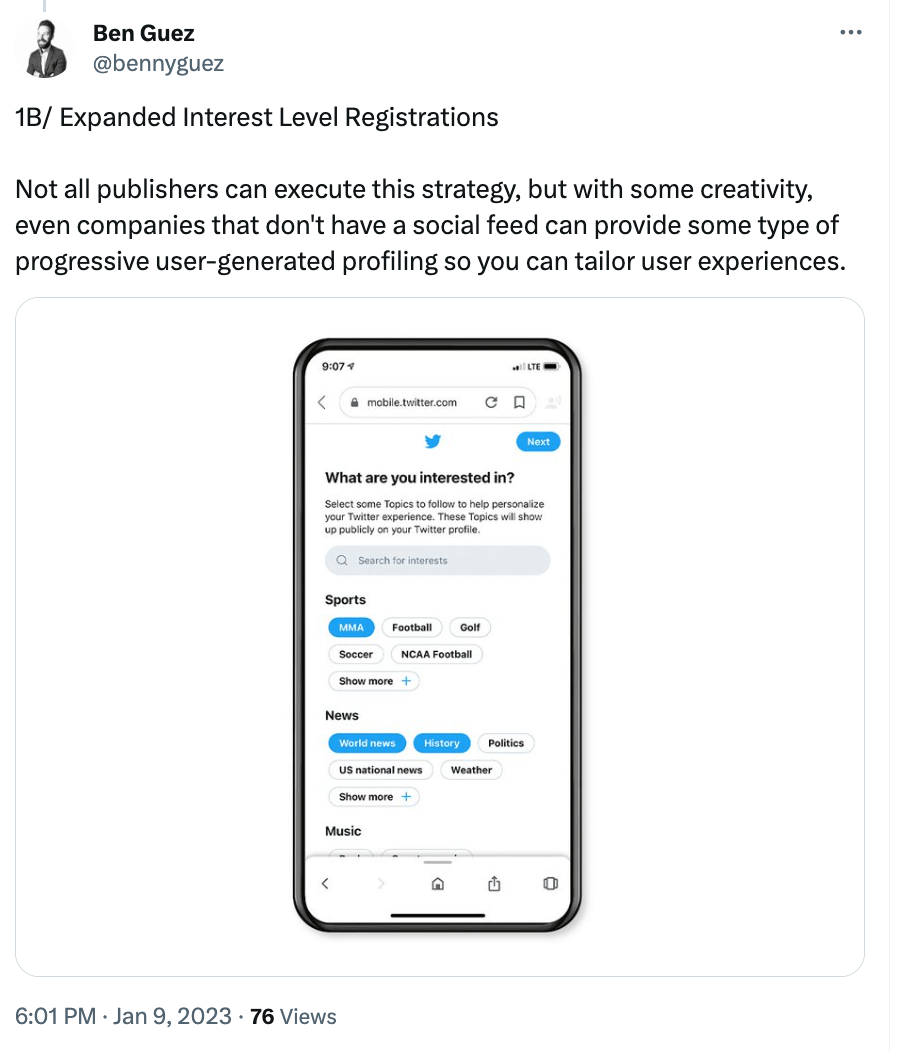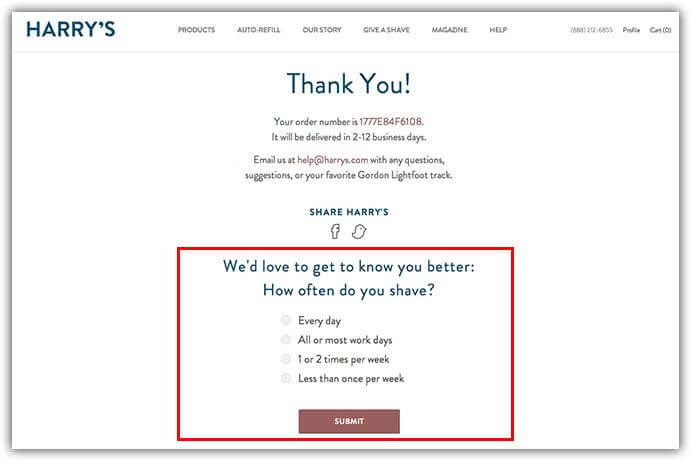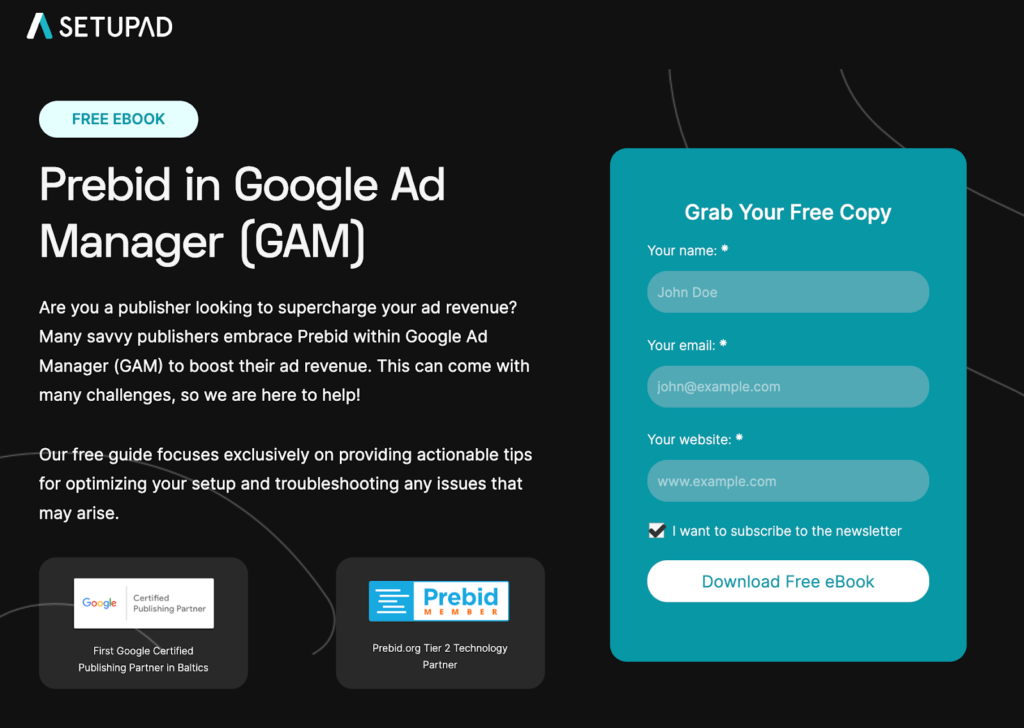7 First-Party Data Collection Methods for Publishers
The evolution of the digital advertising landscape is undeniable, with third-party cookies finally going away for good. The methods by which publishers, advertisers, and adtech providers manage and utilize user data are being reevaluated and redesigned to safeguard online personal information better.
Publishers and tech providers are leading the charge in addressing these privacy concerns through initiatives like Google’s Privacy Sandbox. Meanwhile, the emphasis on first-party data is primarily propelled by publishers, who are in a prime position to forge direct connections with their audience, who appreciate their content, products, or services.
First-party data is also a critical component of publishers’ relationships with advertisers. This article will introduce 7 first-party data collection methods you should know that align with data protection.
Quick Recap: What is First-Party Data?
First-party data refers to the information collected directly by publishers from their audience or customers through their channels. This data (cookies) helps website owners to collect analytical data and optimize website functionality, such as saving language preferences and sign-in data.
This data cannot be shared between domains.
First-party cookies will not disappear because they are considered strictly necessary for a website’s performance and are always active.
Advantages of First-Party Data for Publishers
The main advantages of first-party data for publishers include:
- Improved Audience Insights: First-party data offers deep insights into a publisher’s audience’s preferences, behaviors, and interests.
- Enhanced Personalization: With access to detailed first-party data, publishers can create more relevant and engaging content tailored to their readers’ specific needs and interests.
- Increased Ad Revenue: First-party data allows publishers to offer advertisers targeted advertising opportunities, leading to more effective campaigns, higher CPMs, and overall ad revenue.
- Data Privacy Compliance: First-party data is collected with the user’s consent, making it more with regulations like GDPR and CCPA.
- Alternative to Third-Party Cookies: First-party cookies are a better and more accurate alternative to third-party cookies, which will be phased out completely later this year.
- Competitive Advantage: By leveraging their unique data, publishers can gain insights that competitors may not access, allowing for the development of unique content strategies.
How to Use First-Party Data for Programmatic Advertising
Leveraging first-party data is crucial for publishers not just for nurturing existing subscriber relationships but also for expanding their audience base, especially when conducting their own ad campaigns. Having deeper insights into their audience enables more precise targeting, increasing the value of their advertising space and ensuring higher baseline CPM rates.
For advertisers, the first-party data from publishers is extremely valuable for executing targeted ad campaigns aimed at high-value prospects, leading to a higher return on investment (ROI). Companies that implement data-driven marketing strategies are 6 times more likely to see profitability year after year. First-party data allows advertisers to improve targeting precision and relevance to the audience, minimizing wasted advertising efforts and enhancing ROI.
5 First-Party Data Collection Methods for Publishers
1. User Registrations
Perhaps the most obvious first-party data collection initiative for publishers is user registration. This approach helps build and nurture audiences, offer personalized content, and prepare for a post-cookie era.
However, many challenges are involved with sign-ups and managing user retention, especially for publishers whose business models depend on aggregated traffic and ad revenue.
Users are increasingly selective regarding the content they consume, and the same applies to sites they might never visit again, which disincentivizes them from registering.
Therefore, publishers need to determine their unique value proposition and communicate it. Ask yourself: “Why should users spend time on my site? How can I make their user journey more engaging? What kind of content can I create to incentivize longer session time?”
Building content around communities is a great starting point. For example, many websites have a comment functionality encouraging users to register.

2. Single Sign-On (SSO)
A sophisticated platform for engagement and data gathering should also play a crucial role in a publisher’s Single Sign-On (SSO) strategies. In the aftermath of GDPR, the shift from converting anonymous visitors into engaged and eventually registered or subscribing users has become fundamental to the strategies of numerous European publishers.
This shift also occurs against the backdrop of the formation of SSO/IAM publisher alliances such as Portugal’s publisher alliance Nonio.
Utilizing gamification, surveys, polls, and quizzes that are visually attractive and engaging can directly contribute to increasing the number of registered users, either through registration forms or by directly integrating with a publisher’s SSO technology.
For publishers, SSO protocols like OAuth can streamline user access across platforms and enhance data security. Users don’t have to use unsafe passwords just to remember them, potentially exposing themselves to a data breach. The result is a better user experience and security for publishers.
3. Expanded Interest Level Registrations
This strategy suggests going beyond basic login information to collect data on users’ specific interests. It helps tailor user experiences and content, although it’s crucial to balance the depth of information requested to avoid deterring users.

The challenge is that not all publishers can execute this strategy due to a lack of content diversity to deliver interesting topics to users in the first place.
However, if you have this opportunity, you should use it, as it will motivate users to offer more personal data in exchange for a more tailored experience.
4. Event-based Tracking
Event-based tracking can reveal your users’ true preferences. It goes beyond merely relying on users’ stated interests during registration, such as Sports and Technology.
Integrating machine learning (ML) and artificial intelligence (AI) in event tracking is becoming increasingly common. These technologies are used to analyze historical user behavior to predict the actions of future users with similar patterns. This advanced approach to event-based tracking is particularly beneficial for certain publishers, enabling the creation of more sophisticated user engagement strategies.
Using event-based tracking, publishers can generate first-party cookies to identify and invest in valuable user segments. This allows for delivering more customized content across various platforms, such as web pages, email newsletters, apps, and beyond, enhancing user engagement and loyalty.
5. Surveys and Polls
For publishers aiming to deepen their understanding of their audience, embracing surveys and polls can be incredibly beneficial, especially if you’ve already nurtured a strong relationship with your audience and offer a product they cherish.
As highlighted by Erin Hennessy, Executive Director of Product Marketing & Insights at The New York Times, even with access to sophisticated proprietary audience data, there’s significant value in adopting a straightforward approach like surveys to gather first-party data.

Building trust and engagement with audiences is a foundational step. This approach aligns with audience interests and passions and opens avenues for receiving valuable insights.
In essence, the success of a zero- or first-party data strategy hinges on the quality of your product. Without a compelling product, the opportunity to collect meaningful feedback diminishes.
6. Publisher Provided Identifiers (PPIDs)
New capabilities allow publishers to share Publisher Provided Identifiers (PPIDs) — pseudonymized identifiers generated and managed by publishers — with Google’s programmatic demand. This enhancement aids publishers in broadening the application of their first-party identifiers across various transaction types, including the Open Auction.
From Google’s preliminary tests, partners who integrated PPIDs into their inventory in the absence of other identifiers reported a 15% or more programmatic auction revenue boost.
Audience segments derived from PPIDs will be exclusively available in programmatic auctions where no other identifiers are present, ensuring that PPIDs do not affect the programmatic inventory of publishers where third-party cookies or other identifiers are still in use.
7. Extra Value Products
Extra-value products are only truly valuable when they offer information readers cannot find elsewhere. Otherwise known as lead magnets, the primary goal is to entice prospects into entering the marketing funnel by offering them something of immediate value. This exchange typically involves the prospect providing their email address or other contact details to receive the offered item.
These products are often complimentary to your main offering and can include anything from e-books and templates to access to webinars and free trials.

Source: Setupad
Conclusion
As we move forward, publishers’ ability to adapt to industry changes and, most importantly, understand the benefits of innovating in their data collection and engagement strategies will be key to their success. This requires not only technical skills but also creativity.
The transition to first-party data is a necessity and a strategic opportunity to redefine the value proposition for both publishers and their audiences. By embracing these methods, publishers can secure their place in the future of digital advertising.


